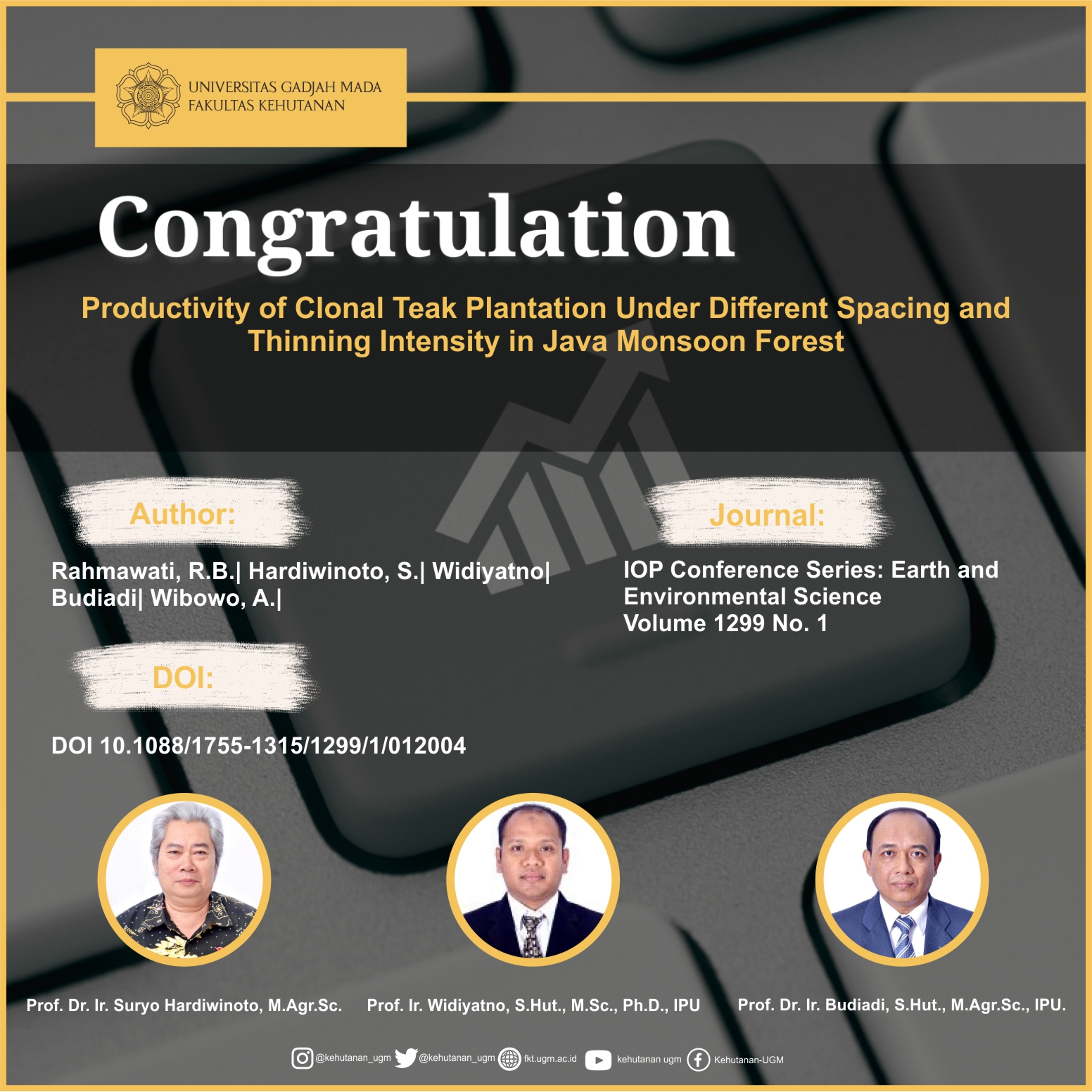
Abstract
Intensive silviculture plays a crucial role in selecting superior clones with high productivity. The use of superior clones needs to be accompanied by appropriate environmental conditions. The arrangement of growing space is one way for teak clones to grow optimally and produce quality wood products. It can choose initial spacing in the early growth phase and thinning intensity in the later growth phase. This study aims to assess and determine the growth of superior teak clones with different thinning intensities at different planting distances to optimize the growing space. Optimizing growth space also has the potential for intercropping under the stand to produce more diverse products. The research design was a Split-plot design with three blocks as replications. The main plots had four spacings, including 3 m x 3 m, 6 m x 2 m, 8 m x 2 m, and 10 m x 2 m. Subplots were thinning intensity, including 0% thinning (control), 25% thinning (moderate thinning), and 50% thinning (heavy thinning). The results showed that spacing could significantly affect diameter growth. Silvicultural thinning showed significant differences in diameter growth, CADI, height, and volume per hectare. The diameter growth showed higher growth at larger spacing and higher thinning intensity, while the volume per hectare was low. The tree height parameter increased with the thinning intensity. The CADI after two years of thinning increased by 14–42% at 25% thinning intensity and increased by about 35–48% at 50% thinning intensity compared to no thinning at each spacing. Meanwhile, the volume per hectare was lower at wider spacing and decreased at a high thinning intensity. These results indicate an increase in spacing, and thinning accelerates diameter growth and provides better-growing space for intercrops.
SDGs:
1. SDGs 8:Decent Work and Economic Growth
2. SDGs 12:Responsible Consumption and Production
3. SDGs 13:Climate Action
4. SDGs 15:Life on Land
Link Dokumen:
Download
